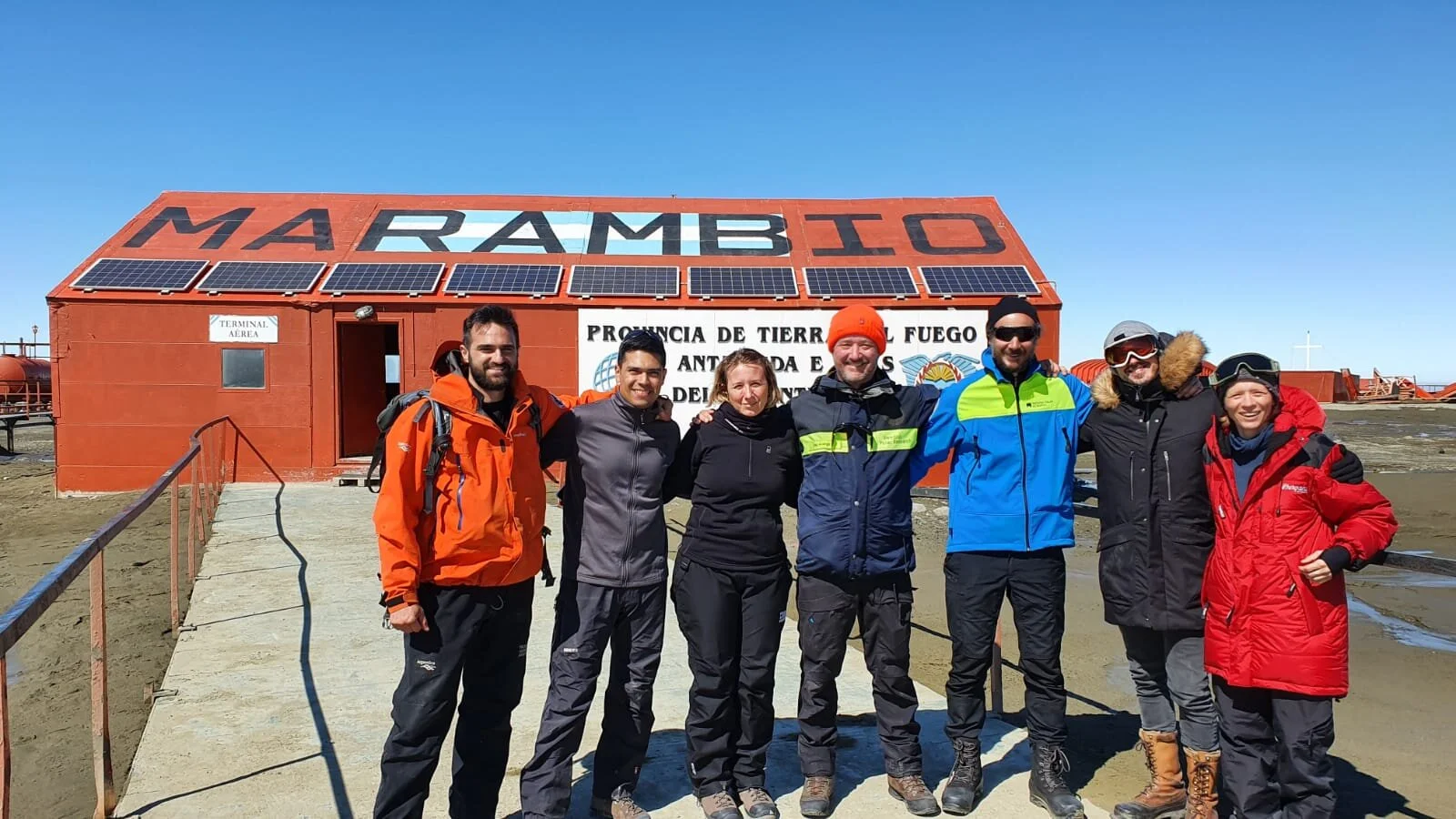The CHAQ2020 expedition has now spent its first days at Snow Hill Island in Antarctica, our first fieldwork site. With a spare hour between hard work and evening dinner, Dag Avango made a little time to summarize what we they have done this far.
“On Friday January 10, we finally left Buenos Aires military airport Palomar with a Hercules of the Argentinean air force. Sitting in the huge body of this military aircraft, together with tons of equipment and in a deafening soundscape, was a new experience to the group from Sweden. Five hours later we briefly middle landed at the military airfield of Rio Gallegos in southern Argentina and then continued the final three and a half hour leap across the Drake Passage and landed safely at the airfield of the Argentinean Antarctic research station, Marambio.
The next morning we loaded our equipment into the helicopters – everything from scientific instruments like drones, a laser scanner, cameras, an automatic weather station to notebooks and food for 7 people for several weeks, tents, communication equipment, generator, petrol, gas and of course personal clothing – an endless list. At midday, we took off and after a short ride safely landed at Snow Hill Island. Here we established our camp, which now consists of three spacious sleeping tents, and one tent each for storage, work and cooking. And, of course the “bathroom” tent, which we placed behind a moraine ridge. With the camp established, all the plans we have made over the last year could begin. We celebrated!
We began our fieldwork on January 12 and for the following two days we had very fine weather, low winds and the sun shining from a clear blue sky.
Under these more or less ideal conditions, the members of the CHAQ2020 team got going on their different field work tasks. Me and Gunnar Almevik established a basic map sketch over the site, which we now use to plan our work. Jonathan Westin has all but finished the laser scanning of the Nordenskjöld hut – interiors and exteriors. The work to produce ortophotos of the area is also nearing completion, after a substantial number of drone flights by Jonathan and myself. We will use photogrammetric data from the drones, together with terrestrial photogrammetry data that Gunnar Almevik has produced, to create 3D models of this site.
Meanwhile our expedition leader, Pablo Fontana, has not only managed the camp and communications, but also prepared for the setting up of our automatic weather station and for our upcoming re-photography campaign. Valeria Contissa, the conservationist on our team, has set up her lab in our work tent and is already far into conservation work on artefacts from the Nordenskjöld expedition. While all of this has been going on, Kati has been consistently capturing the work we have been doing on film and on sound recording, collecting the raw material for the film Melting history, which will be one of the products coming out of this expedition. Last but most certainly not least Hector Manuel – our manager of logistics from the Argentinean military – has been feeding us tea, mate, food and great company. He is an important reason why the team is in a very good mood and spirit, even though the last two days have been very busy.
In the coming days you will see more in depth stories from CHAQ2020, so keep checking what’s happening on our site.




